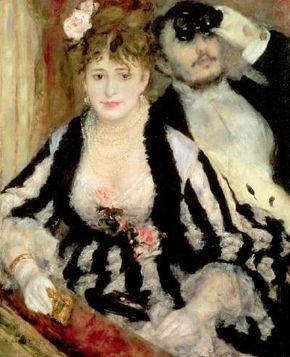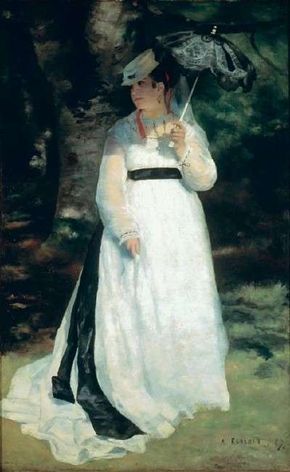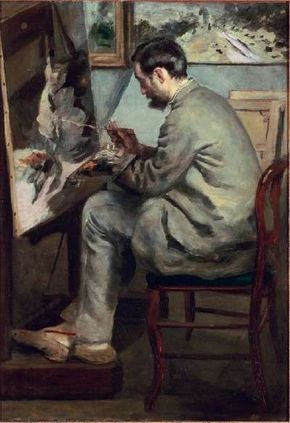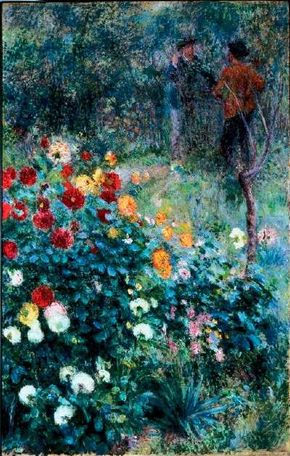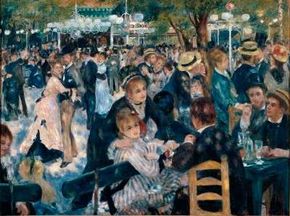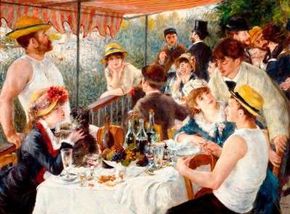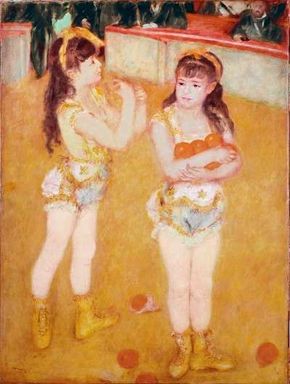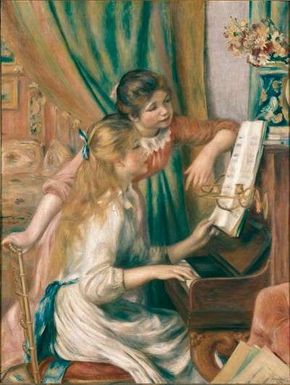Pierre-Auguste Renoir (1841-1919), part of the original circle of young painters which became known as the Impressionists, was known for setting his paintings in beer gardens, public parks, and at the opera, capturing the spirit and sophistication of urban entertainment. His 1874 painting La Loge, which portrayed a glamorous couple in a box at the opera, was part of the first exhibition that helped launch the nascent Impressionist movement.
Throughout his career Renoir would find success in both the official Salon of the day and with the Impressionist exhibitions. His portraits brought him a steady and substantial income, allowing him to pursue his rising interest in painting the female figure in contemporary guise as seen in Young Girls at the Piano. Though Pierre-Auguste Renoir didn't participate in all of the Impressionists' shows, for the public his colorful, spontaneous approaches defined a "classic" idea of Impressionism.
Advertisement
Below you will find links to some of Pierre-Auguste Renoir's paintings. Click them to learn about this Impressionist master.
- La Loge: Pierre-Auguste Renoir's depiction of a fashionable couple at the opera demonstrates Renoir's interest in the modern-life subject. Read about La Loge by Renoir.
- Lise with a Parasol: Renoir's work Lise with a Parasol was commended by the critics for its modernity. Learn about Pierre-Auguste Renoir's 1867 painting Lise with a Parasol.
- Portrait of Frédéric Bazille Painting The Heron with Wings Unfolded: Pierre-Auguste Renoir and Frédéric Bazille both served in the military during the Franco-Prussian War. Learn about Renoir's portrait of his friend and fellow painter.
- The Garden in the rue Cortot, Montmartre: Renoir's The Garden in the rue Cortot, Montmartre features fellow Impressionists Afred Sisley and Claude Monet in the background. Find out about The Garden in the rue Cortot, Montmartre, by Pierre-Auguste Renoir.
- The Ball at the Moulin de la Galette: The Ball at the Moulin de la Galette is one of Pierre-Auguste Renoir's most famous paintings, capturing the spirit of the age. Read about The Ball at the Moulin de la Galette, which was painted in 1876.
- The Luncheon of the Boating Party: Pierre-Auguste Renoir's future wife appears in his 1880-1881 painting The Luncheon of the Boating Party. Learn about this well-known painting by Pierre-Auguste Renoir.
- Acrobats at the Cirque Fernando (Francisca and Angelina Wartenburg): Acrobats at the Cirque Fernando was one of 27 paintings Pierre-Auguste Renoir submitted to the Impressionists' seventh exhibition. Read about this painting, which features two daughters of a circus owner.
- Two Sisters (On the Terrace): This 1881 painting is another example of Renoir's brilliant use of color. Learn about Two Sisters (On the Terrace).
- Young Girls at the Piano: Pierre-Auguste Renoir's Young Girls at the Piano reflects the artist's long-held interest in the amusements of the middle class. Learn about Young Girls at the Piano, which Renoir painted in 1892.
On the next page, we'll look at a painting that represents Renoir's -- and the Impressionists' -- interest in contemporary urban life.
For more on Impressionist paintings, artists, and art history, see:
For more on Impressionist paintings, artists, and art history, see:
Advertisement
